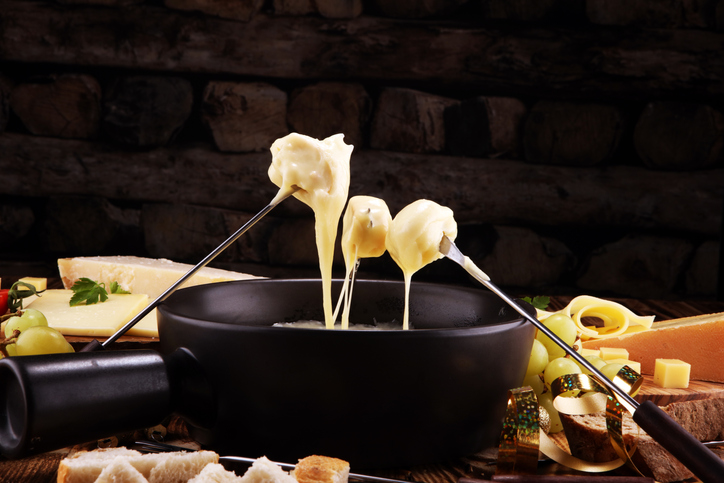Fast food burger places, barbecue joints, and Chinese restaurants remain stalwarts on the American food scene, outlasting a lot of other types of eateries that have come…and mostly gone.

Fondue
While the notion of dipping pieces of bread, meat, and vegetables in hot oil or cheese and calling it a (very filling) meal dates back to 18th century Switzerland, it caught on in America in the late ‘60s and 1970s. Fondue became a major food fad, both as an in-home dinner party concept (if you got married in the ‘70s, you were probably gifted a fondue set) and as a restaurant theme. Couples or groups would get their own big pot of cheese and stick skewers of food into the bubbling cauldrons. Then, for dessert: cookies and cake dipped into melted chocolate fondue. (That doesn’t date back to the 1700s — chocolate fondue is purely American.) One of the biggest fondue restaurant chains, The Melting Pot, still operates about 100 locations, far less than it did at its peak in the mid-1980s.
Pizza parlors with pipe organs
It seems an arbitrary and inexplicable combination, but in the ‘70s and ‘80s, every major city in the United States was home to at least one pizza parlors where a live musician played old-timey songs (or movie scores, or adapted rock tunes) on a gigantic pipe organ, many of them dating to the 1920s. (Plenty of these establishments salvaged their organs from old, disused silent movie theaters.) Essentially low-cost, easily repeatable dinner theater, “pizza and pipes” joints faded away by the mid-‘90s, replaced by another, more up to date kind of dinner theater: ones with singing animatronics, like Showbiz Pizza and Chuck E. Cheese.
Healthy frozen yogurt
It seems like every strip mall in the country today is home to a small, self-service, weight-and-pay frozen yogurt shop, but that’s the second wave of its popularity. Back in the ‘80s, thousands of frozen yogurt shops opened up across America, mimicking the ice cream shops of yore — customers went in, and a person behind the counter served them their ice cream. They exploded in popularity because in the health-conscious ‘80s, frozen yogurt was marketed as a healthy alternative to ice cream, because it had less fat. (It remained, however, just as sugary, and is also full of a lot more preservatives than most ice creams.) While there were plenty of mom-and-pop stores, but one chain dominated the fro-yo market: The Country’s Best Yogurt (TCBY). Once 2000-locations strong in the early ‘90s, there are now just a few hundred.







